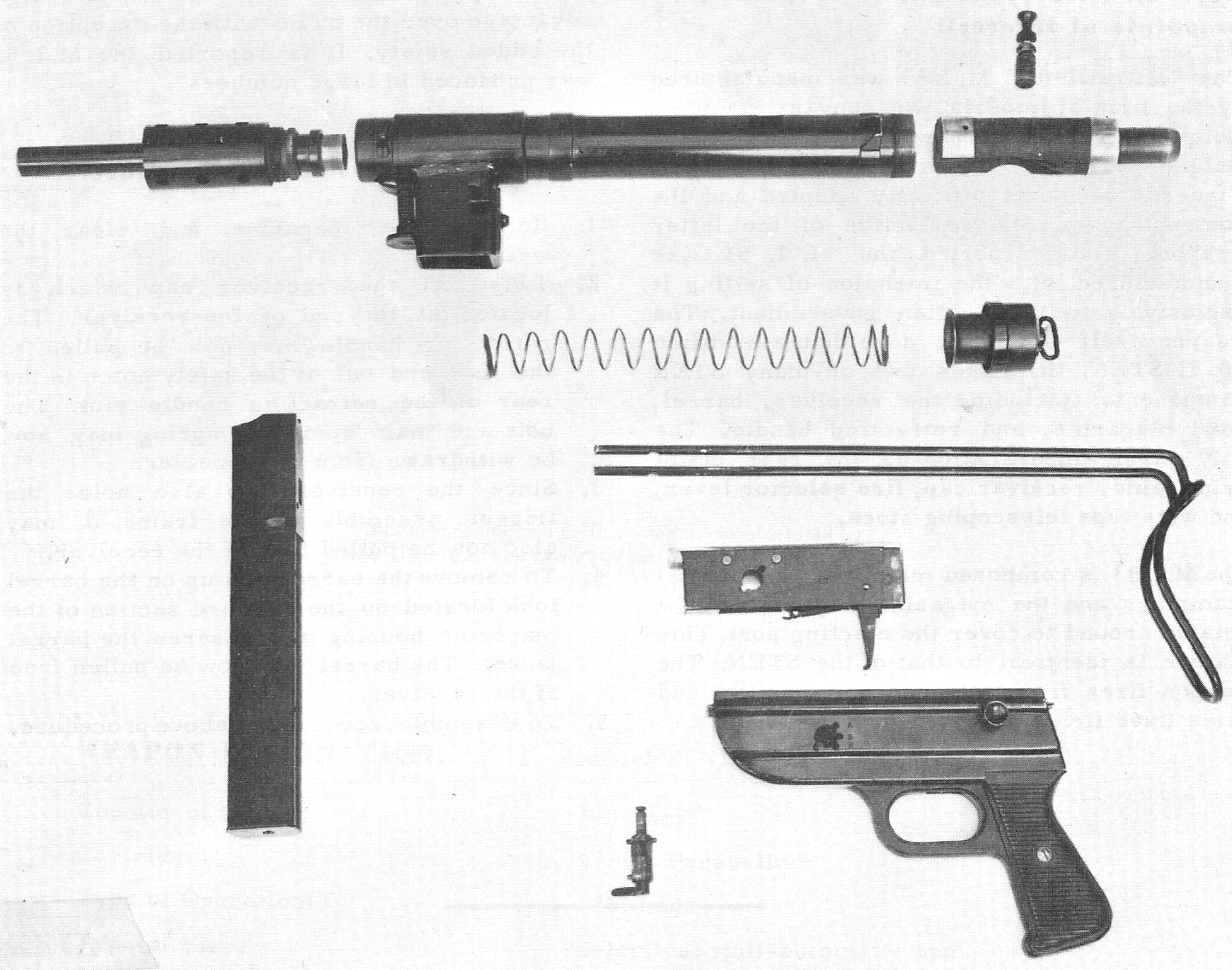

The
M.I.53 (Mitraillette
Imperia 1953)
submachine gun was a brief venture by Imperia S.A. of Nessonvaux, Liège,
introduced to compete in Belgium's contemporary SMG trials. The concept
behind the M.I.53 was simply to refurnish existing supplies of surplus
Sten guns, leftover from World War II, into modern submachine guns. This
was achieved by fitting a new lower receiver unit to a Mk.II Sten
receiver, featuring a new trigger group, a fire selector switch, a
pistol grip, and a retracting wire stock. Other detail improvements were
added including a new cocking handle and rear sight protectors, but the
barrel, upper receiver, magazine housing, bolt, recoil spring, and
32-round magazine were all recycled from the Sten. Imperia proposed that
converting the Belgian Army's existing Sten guns into M.I.53s would be
more cost-efficient than adopting an entirely new weapon.
Reportedly some M.I.53s were assembled in Luxembourg by SOLA S.A., using Luxembourg-service Stens. Imperia demonstrated the gun to the Belgian Army in 1953, but by that time they were already invested in a rival design, the Vigneron, and therefore expressed no interest in the M.I.53. With so many surplus Sten guns already available across Europe and many better designs being marketed, there was little incentive to invest in the Imperia submachine gun. The M.I.53 achieved no sales and was quickly discontinued.
